Fix: There was an error communicating with the steam servers
The error “Error Communicating with Steam Servers” can be traced back to a number of problems. First of all, it may be that the Steam servers are down and not accessible. This happens rarely but it is possible. Other than that, it can be something wrongly configured on your PC or some third party program interfering with the connection. Check out the guide below to troubleshoot and fix your problem.
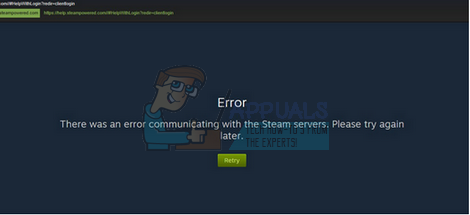
Solution 1: Checking Steam Server Status
As a gamer, you already know this question, is Steam down? This question pops up the moment you are unable to connect to the Steam client, store, or community properly.
There are a lot of ways through which you check Steam’s server status. A Steam site is purely dedicated to providing this information. You can check the status of all the different servers i.e. United States, Europe, Netherlands, China etc. If the servers are healthy and up and running, the text would appear as green. If they are offline or going through overloading, they may appear as red. Some servers may also appear orange to indicate their load is moderate; any more load would overload the server to its maximum capacity.
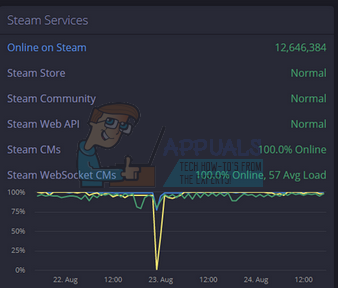
Not only this, you can also check if the Steam store is working properly as well as the Steam community. If you are experiencing the error where Steam prompts the error message “Error Communicating with Steam servers”, you should first check if the Steam servers are down. If they are up, it means there is a problem on your end and you can start following the solutions down below.
Check the Steam’s server status from here.
Solution 2: Changing your Download Region
Steam has divided its services into different geographical regions. There are different servers implemented at these locations and by default, the server closest to you is set as your download server.
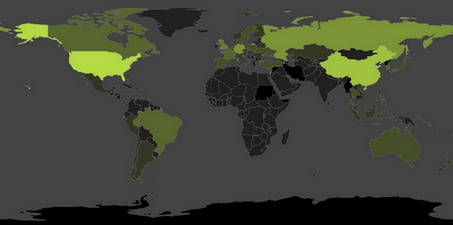
There are millions of players online in Steam every day and it not new that the servers may sometimes reject a client or two in order to serve the ones already in the queue. Or it might be the case that your server is overloaded/down for maintenance. We can try changing your download region and see if this fixes the problem at hand. Steam may ask you to restart your client in order for the changes to take place. If asked, press Ok and after restarting the Steam client, check if the problem got fixed.
You can view our detailed guide on how to change your download region from here.
Solution 3: Disabling Firewall and adding exception to Antivirus
It is a well-known fact that Steam conflicts with the Windows Firewall. As we all know, Steam tends to download updates and games over the background while you are using Windows for something else. It does this so you don’t have to wait for the download to finish when you want to play your game or use the Steam client. Steam also has access to a number of system configurations and it alters it so you can get the best experience available for your gaming. Windows Firewall sometimes marks some of these processes as malicious and tends to block Steam. There may even be a conflict going where the Firewall is blocking Steam’s actions in the background. This way you won’t even know it’s happening so it’ll be hard to pinpoint it out. We can try disabling your Firewall temporarily and check if the error dialogue goes away or not.
You can check our guide on how to disable the firewall from here.

Like in the case of Firewall, sometimes your antivirus can also quarantine some of Steam’s actions as potential threats. The obvious solution would be to uninstall your antivirus but it isn’t wise to do so. If you uninstall your antivirus, you will be exposing your computer to a number of different threats. The best way is to add steam to the list of applications which are exempted from scanning. The antivirus will treat Steam as if it wasn’t even there.
You can read our guide on how to add Steam as an exception to your antivirus from here.
Solution 4: Adding the parameter of –tcp
Steam originally uses the UDP (User Datagram Protocol) for transmission of data. We can try changing it to TCP (Transmission Control Protocol). As we all know TCP is more reliable whereas UDP is mostly faster. If we encounter an error, we can try changing protocols to see if the problem at hand gets fixed.
You always have the option to resort back to the default setting by removing the launch option/command line.
- Navigate to your Steam directory. The default Steam directory is “C:\Program Files (x86)\Steam”. If you installed Steam to another one, you can browse there.
- Once in the main Steam folder, locate the file “Steam.exe”. Right click on it and select Create Shortcut.
- Right click on the shortcut and select Properties from the drop down menu.
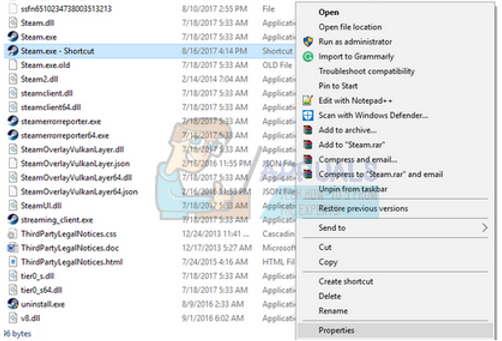
- In the target dialogue box, write “-tcp” in the end. So the entire line looks like:
“C:\Program Files (x86)\Steam\Steam.exe” –tcp
Please remember to give a space after the default line in the target dialogue box.
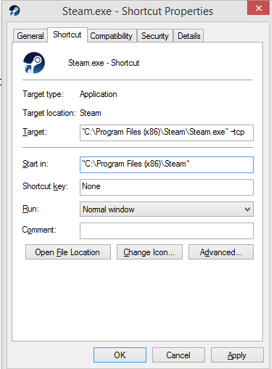
- Apply the changes and close the window. Launch Steam using the shortcut and hopefully, it will run as expected.
Solution 5: Disabling flow control of your Ethernet
If you are using the internet through Ethernet, we can disable your flow control to see if it helps the problem. Ethernet flow control is a mechanism developed to stop the flow of data. There are many mechanisms involved such as the first flow control mechanism, and the pause frame etc. The goal of this mechanism is to ensure there is totally zero loss under congestion and it also allows the prioritization of voice over IP (VoIP). This means if someone in your network is using the internet for calling/video calling, they will get priority over the network and you will get low bandwidth.
There is also a pause frame present which can send the computer a pause frame. This halts the transmission of data of the user for a limited period of time. If the network is overwhelmed, the pause frames will keep coming and the data transmission will be indefinitely halted.
We can try disabling the flow control of your Ethernet to see if there are any results. Later on, if you want to revert the settings back, you can with ease.
- Press Windows + R to bring up the Run application. In the dialogue box type “devmgmt.msc”. This will launch your computer’s device manager.
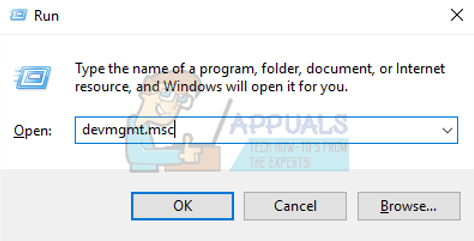
- Once in the device manager, search for your Ethernet network adapter (it will be under the drop down of Network adapters). Once you have located it, right click on it and select Properties.
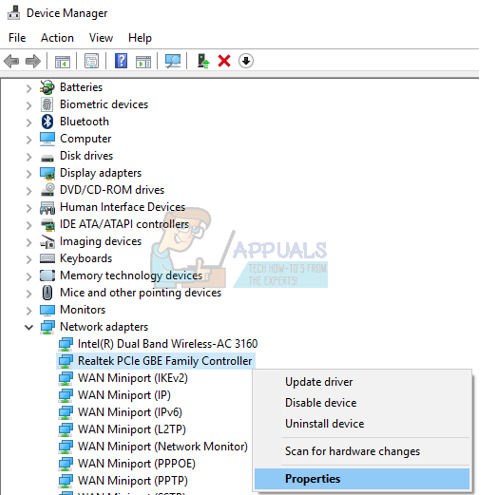
- Once the properties are opened, navigate to the Advanced Search for Flow Control from the list of options and click on Disabled from the drop down of Value.

- Save changes and exit the device manager. A restart is recommended and also launch Steam using “Run as administrator”.
Solution 6: Restarting your router manually
It can be possible that your internet router may be saved in the wrong configuration. Or any recent settings may have caused it not to work properly. Of course, you should try to restart the router first and check, but, if that doesn’t work, we can try resetting the router (hard-reset) manually and see if it improves our situation.
- Pick up your router and turn it back so all the ports are in front of you.
- Look for any button named “reset” on its back. Most routers don’t have these buttons so you don’t accidentally reset it to factory defaults, instead, you have to use something thin like a pin to press inwards towards the hole which says “reset”.

- Reset your router and connect your computer again to the WiFi network. Launch Steam again and check if the problem gets fixed.
Note: It is worth noting that after you manually reset your router, your router won’t have any SSID (password) and the name of your WiFi will be set to default (something like TPlink121). Furthermore, any internet settings that your internet provider have set on it will be removed. Do not perform this method unless you know those settings or your router works as a plug and play. It can be a real pain to call up the provider and ask them to guide how to make the internet working again so always keep this factor in mind. All the connected devices will be disconnected and you will have to re-connect all the devices one by one again.
Solution 7: Resetting settings of your router through the web page
There is also an option to reset your router settings through the web page using your default gateway IP address. You can use this method if solution 6 is proving troublesome for you due to any reason. Once again, the note written above applies to this solution too so it’s best to keep all of those things in mind.
- Open your web browser and type in the IP address of the router (if you don’t know this, it will most probably be written on the back of your router or in its box/manual). It will look something like 192.168.1.1
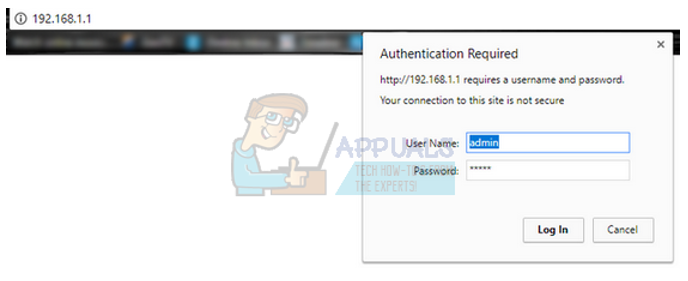
- Press enter. Now the router will ask you for the username and password before it allows you access. The default ones are admin/admin. If this isn’t working and you don’t remember the credentials, you can always contact your internet provider and ask them.
- Click on the Tools tab on the top and the System Commands on the left.
- Here you will be seeing a button named Restore. Click it. You will be disconnected with your router and it will resort back to factory settings.

Note: Do note that the menu configuration may be different for each router. You can easily type in your model number in Google and see how to reset the router (if you are unable to reach the factory reset button yourself).
- After connecting back to the internet, launch Steam again and check if it is registering the internet connection or not.
Solution 6: Disabling P2P programs
P2P programs form a direct conduit to your computer. Also, their security measures are easily avoidable. Malware writers actively exploit these programs and spread viruses and malware onto your PC. If you haven’t configured your P2P programs correctly, you may be sharing more than you realize or know. There have been many cases where a person’s information was shared through P2P programs such as his computer’s physical address, passwords, usernames, email addresses, etc.
With these credentials, it is very easy for exploiters to access your computer and delete important system files which may lead you having this error.
Examples of P2P programs include BitTorrent, Utorrent etc. Uninstall them, run a malware check and repair your registry files if you have to. Then start Steam again using administrative privileges and check if your game still crashes.
Note: If your computer is acting weird and there are different advertisements popping up again and again on your home screen, it means that your PC is infected. Try installing a trustworthy antivirus and run a thorough check.
Final Solution: Refreshing Steam files
Now there is nothing left except to reinstall Steam and see if that does the trick. When we refresh your Steam files, we will preserve your downloaded games so you won’t have to download them again. Furthermore, your user data will also be preserved. What refreshing Steam files actually do is delete all the configuration files of the Steam client and then forces it to install them again. So if there were any bad files/corrupt files, they will get replaced accordingly. Do note that after this method, you would need to log in again using your credentials. Don’t follow this solution if you don’t have that information at hand. The process may take a while so avoid canceling once you start the installing process.
You can follow how to refresh/reinstall your Steam files through this guide.
Note: If you are having a connection error where your entire Steam client refuses to connect to the internet, refer to this guide.